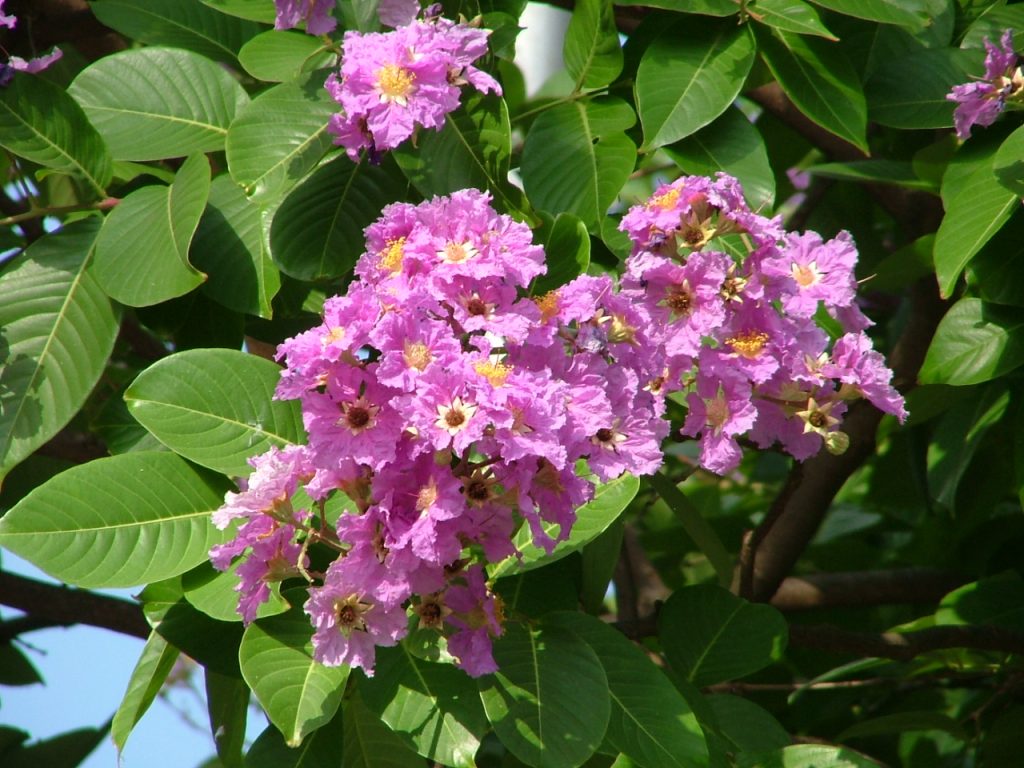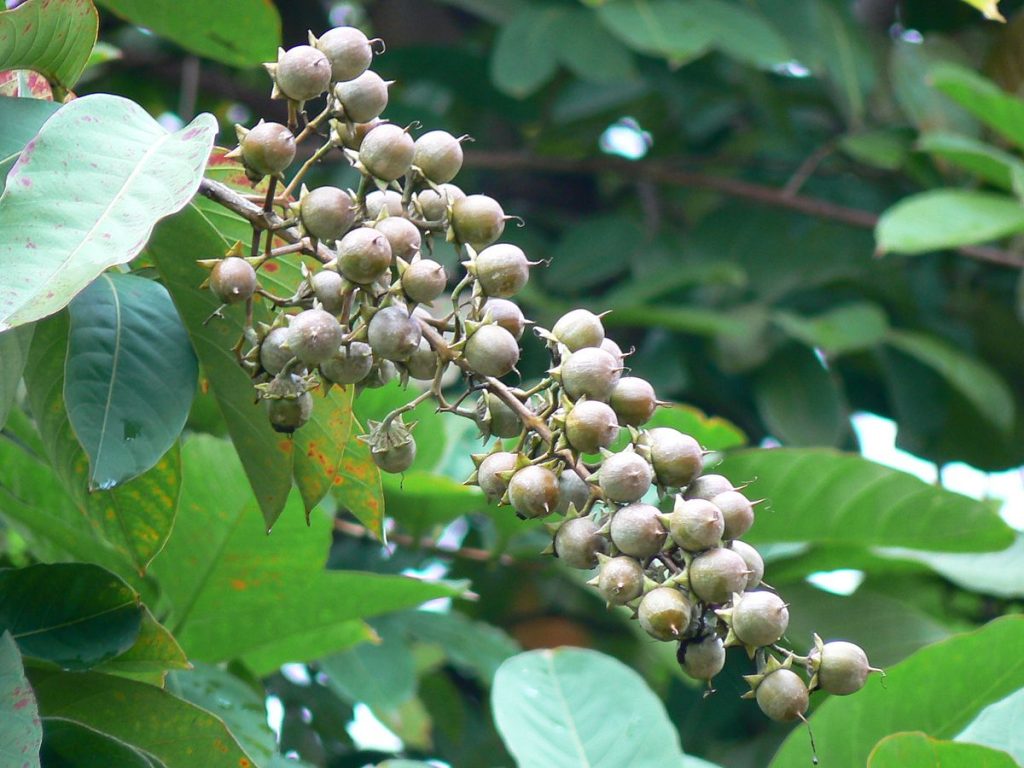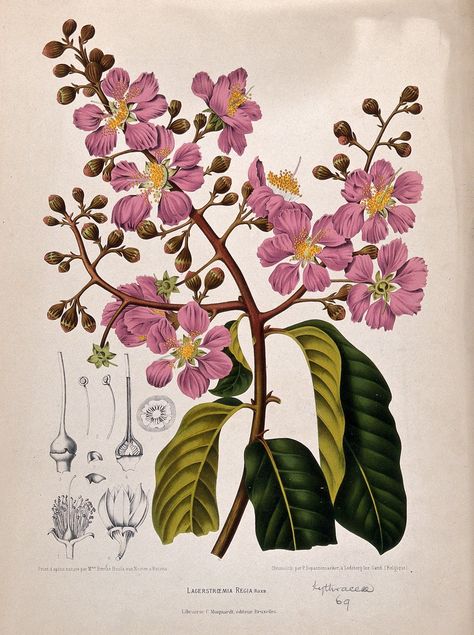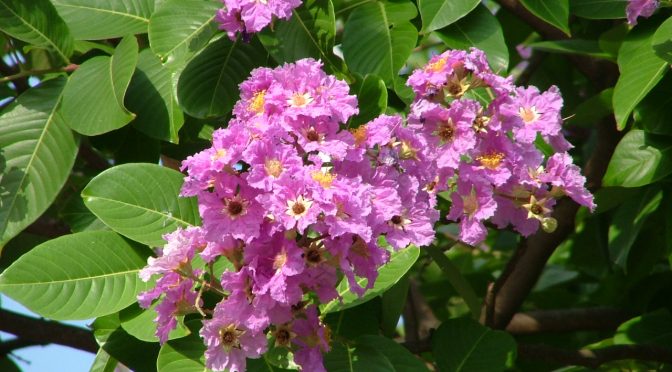Pride of India is a fast-growing, medium-sized, deciduous, sub-canopy tree with an upright, round crown. The tree, which produces suckers, usually grows 15 metres tall or more, with some specimens up to 26 metres. The bole is around 60cm in diameter.
The tree is harvested from the wild for local use as a medicine and source of materials. The wood is of good quality, considered to be one of the best timber trees in Myanmar and Assam, and is often traded. One of the most strikingly showy of flowering trees, and a good shade tree, it is commonly cultivated in gardens or along the sides of roads for its brightly coloured mauve or pink flowers with crinkled petals. These are borne in large, terminal, conical panicles, 30 cm long. The tree is clothed with 12-inch-long, dark green, oblong, leathery leaves which turn attractively red before falling in winter.
The seeds are narcotic. The leaves are purgative. A preparation from dried leaves, known as banaba, is widely used in the Philippines to treat diabetes and urinary problem. A leaf poultice is used to relief malarial fever and is also applied on cracked feet. A decoction of the bark is used as a treatment against diarrhoea and abdominal pains.
The tree has a dense and wide spreading root system, which has made it useful in plantings for erosion control. It has been used in reforestation schemes for degraded hills in Java. The tree is also used as a support for rattan canes.



